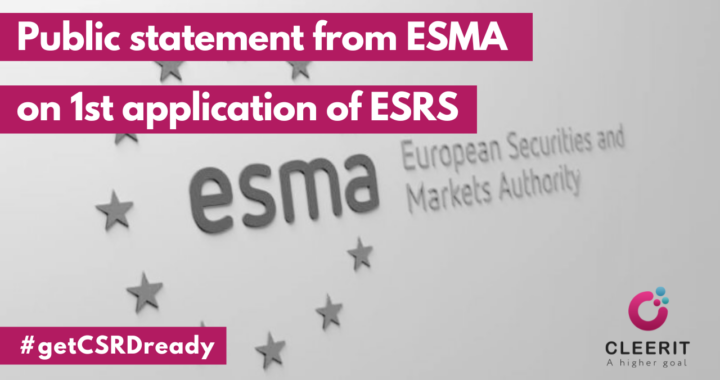On July 5 the European Securities and Markets Authority, ESMA, issued a document on the first application of the ESRS.
Here are some key extracts:
✅ In ESMA’s view, the sustainability statements that will be published in 2025 will constitute an important milestone in the learning curve of all stakeholders in the sustainability reporting ecosystem.
✅ Acknowledging this learning curve does not relieve issuers from the responsibility to ensure compliance with ESRS.
⭕ ESMA notes that for undertakings with experience in sustainability reporting under previous requirements, it is necessary to carefully assess whether the existing processes, systems and controls are still fit-for-purpose.
⭕ ESMA stresses that it will be particularly important to carefully assess whether their historical approach to the presentation of sustainability information is consistent with the CSRD and ESRS and, if not, to make adjustments accordingly.
⭕ ESMA stresses the importance that, from the first application of the ESRS, the reporting process is conceived in a way that caters for digitisation of the sustainability statement in a way that is aligned with the granularity of the ESRS requirements.
⭕ ESMA notes that following the structure of the ESRS would make digital tagging easier in the future.
✅ ESMA notes that, as a general rule, the ESRS do not envisage cases in which the lack of data justifies the omission of disclosure of material information.
✅ In acknowledgement of the considerable changes for the sustainability reporting practices entailed by these new requirements and with a view to supporting their implementation, ESMA wishes to:
➡ point to elements of guidance by the European Commission and EFRAG
➡ highlight the following key areas of attention which, in ESMA’s view, are of particular relevance in the preparation of ESRS sustainability statements:
✔ establishing governance arrangements and internal controls that can promote high-quality sustainability reporting
✔ properly designing and conducting the double materiality assessment and being transparent about it
✔ being transparent about the use of transitional reliefs
✔ preparing a clearly structured and digitisation-ready sustainability statement
✔ creating connectivity between financial and sustainability information.
✅ ESMA underlines, in particular, the responsibility of top management and supervisory bodies of issuers, as well as the importance of the oversight role of the audit committee and other relevant committees, to:
➡ ensure the overall internal consistency of the sustainability statement and its consistency with the other parts of the annual financial report;
➡ implement and supervise internal controls; and ultimately
➡ contribute to a high-quality sustainability statement.
